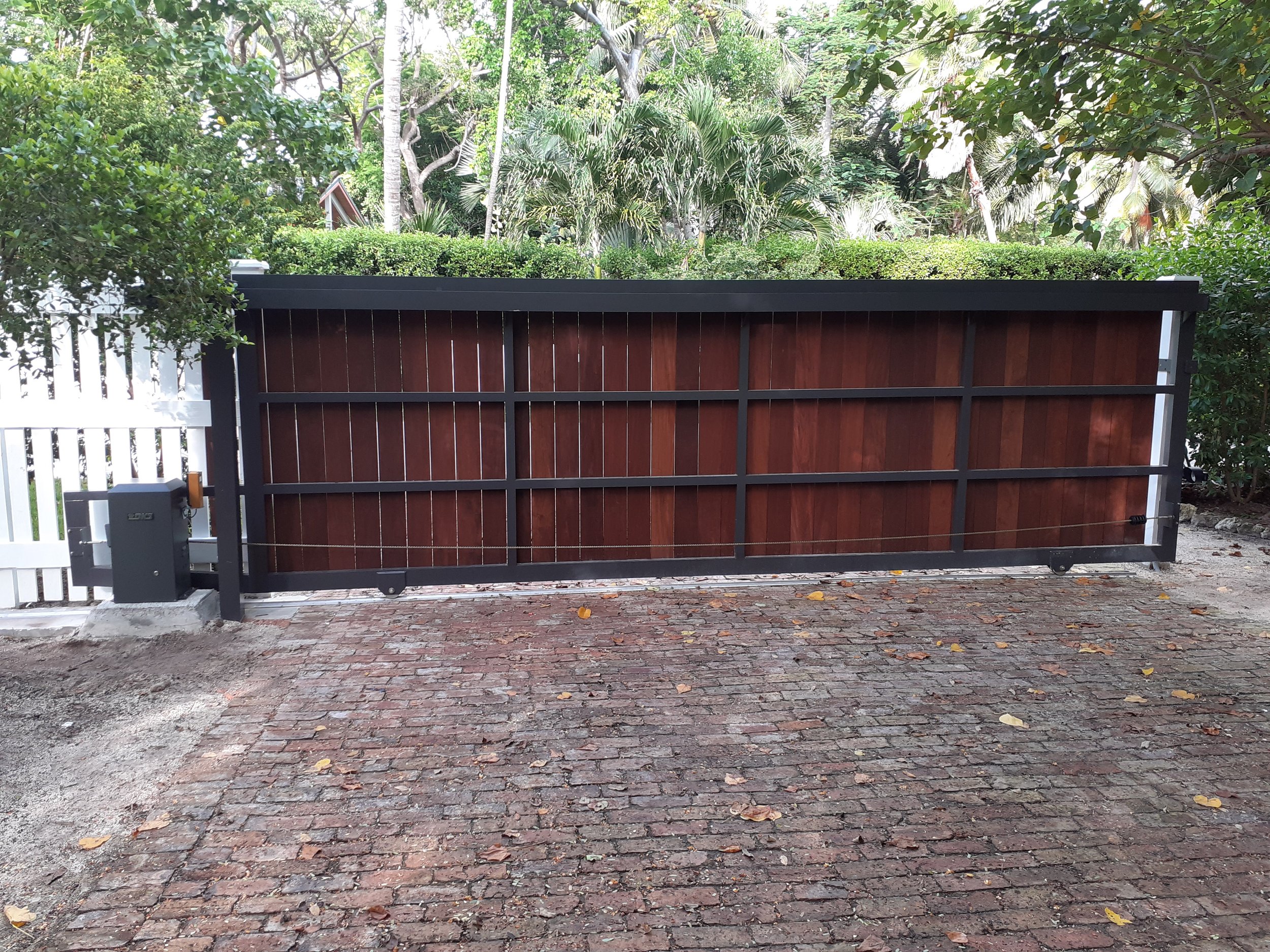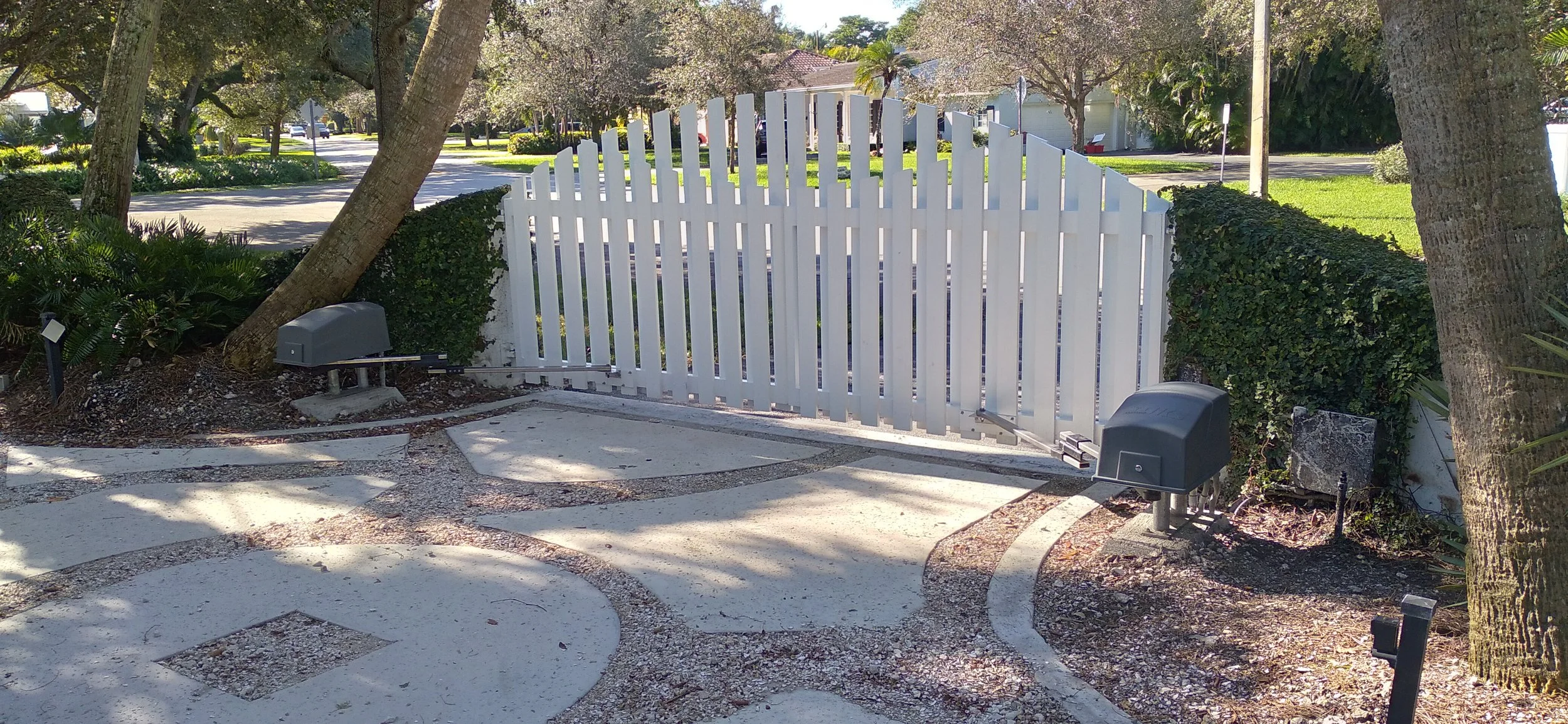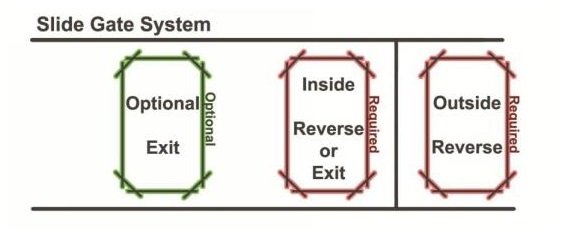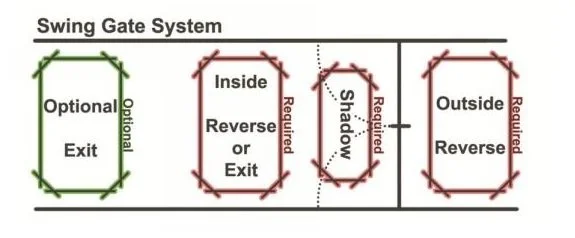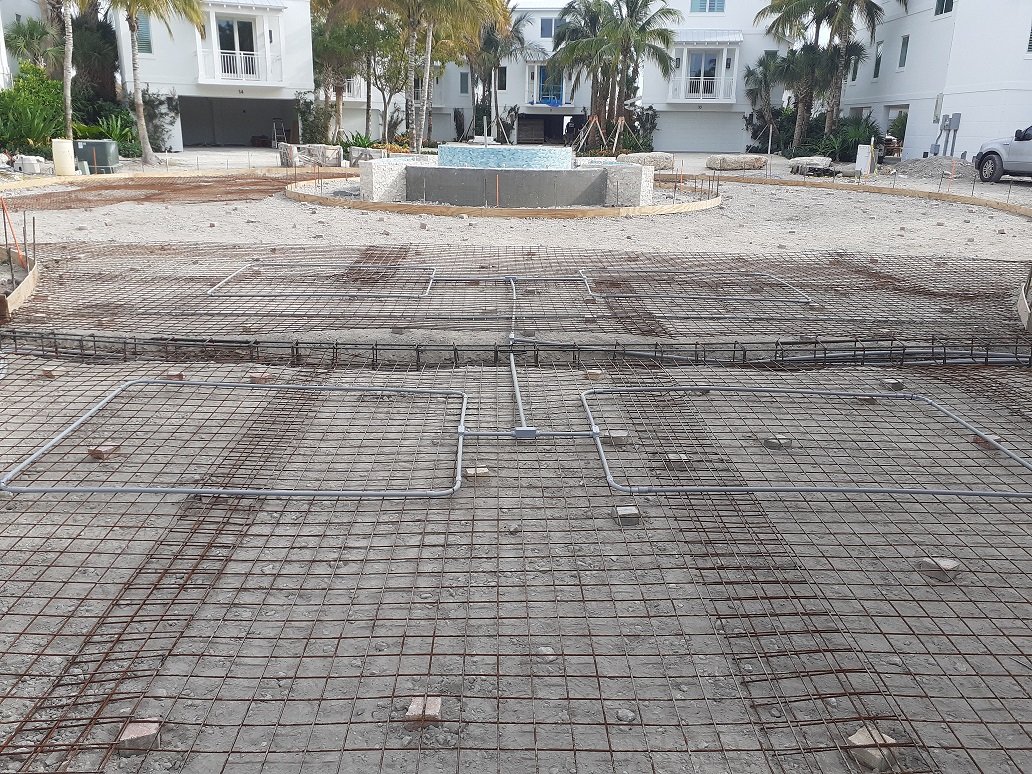What type of gate(s) do you have?
This may seem like a straight forward question but to us there are two answers for the most part, swing gates and slide gates. For our purposes, lift type gates will fall under the slide gate category.
Custom gate by Arts Works Miami - Doorking 9100 gate operator stainless steel chain - Florida Keys
Slide gates roll linearly on rollers of some kind.
Retrofit gate operator installation - DoorKing 6050 bi parting swing gates - custom stainless steel arms
Swing gates pivot like a house door on hinges laterally.
Double gates, either slide or swing are called bi-parting gates. These swing gates are an example of bi-parting swing gates.
As you should be able to visualize, swing gates when moving, cover a much larger area over the ground.
You can imagine that a swing gate would require more coverage for reversing in the event that a vehicle enters the area where the gates are moving.
On the above swing gate installation, there are four in ground vehicular sensors. There is one outside the gates, one just on the inside (protects against opening onto a vehicle or closing onto one) also one just this side of the swing radius and then there is a free exit. The free exit causes the gates to open and it is just behind the photographer. That last (or first as you're leaving this location) long distance loop, allows the gate to start opening so that the vehicle does not need to wait while the gate opens as it approaches from the inside. That long free exit is the only in ground sensor that is not required by UL325 that governs automated vehicular gate installation.
The above pdf explains loops better than I can. It's from BD Loops, a maker of preformed in ground sensors. The below pictures are taken from their article and show the positioning of the loops relative to the driveway and to the gate in each situation.
Slide gate loops. Illustration: BD Loops
Swing gate loops. Illustration: BD Loops
We get a lot of questions when quoting gate operator installations. “Why do I need those?” On new installations it's not that difficult to incorporate the requirements. On replacement installations, it's a lot harder. “Why do I need those, they aren't there now?” There is also, "My gates have worked fine without all that."
It's hard to argue with that reasoning, except to say that when we install gate operators and access controls, we try to follow the UL325-2018 (the latest at the time of this writing) and use it as our guideline. We can't always follow it exactly, sometimes there are issues of right of way, public property, architectural elements in the driveway etc. that preclude an installation exactly as shown, but we can usually cover those types of issues with alternative equipment.
Multiple loops prepour.
One thing to think about, if you're planning on putting in gate operators, make sure to have the loops installed BEFORE the driveway is poured or before the pavers are installed. We can work around those times when the contractor is moving quick but it definitely is easier when we can work together.
If you're looking to install gate operators or access controls, give us a call.
305.275.9685


